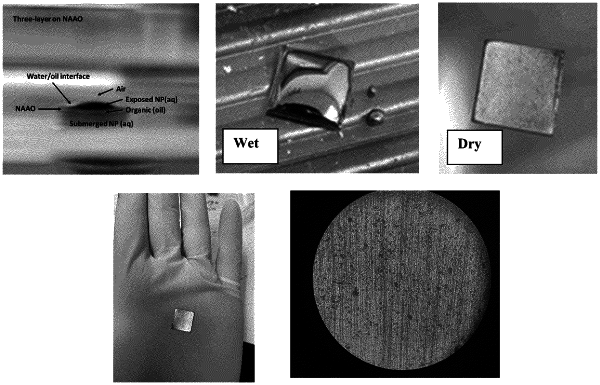| CPC G01N 21/658 (2013.01) [C25D 11/24 (2013.01)] | 1 Claim |

|
1. A method to synthesize colloidal gold nanoparticles on Anodic Alumina Oxide substrates for Surface-enhanced Raman Scattering comprising:
soaking a 250 mL Erlenmeyer flask in a base bath solution overnight;
thoroughly rinsing said flask with purified water and creating a solution by adding 200-300 mL of purified water and 0.05 to 0.06 grams HAuCl4;
turning off any lights to prevent any interaction with gold salt;
bringing said solution to a boil with moderate magnetic stirring on a hot plate;
once boiling, the stirring is increased until a vortex is achieved in said solution;
then rapidly adding 0.05 to 0.06 grams sodium citrate to said solution, and continue boiling with rapid stirring for 14 minutes;
removing said flask from the hot plate and cooling said solution to room temperature;
cooling said resulting solution containing colloidal gold nanoparticles in a refrigerator;
once cooled, measuring said colloidal gold nanoparticles solution with absorption spectroscopy to confirm the presence of a surface plasmon peak;
centrifuging said colloidal gold nanoparticles solution in plastic centrifuge tubes at 4000 rpm for 25 minutes for a batch comprising 6 plastic centrifuge tubes; and,
forming colloidal gold nanoparticle films on nanoporous anodic alumina oxide substrates using a wet-chemical, three-phase ligand-exchange procedure carried out at room temperature.
|